
Dog licking explained

Philippa Short
21 November 2023 | 7 minutes read
What’s life with your canine without some slobbery kisses throughout the day?
You may have assumed it’s just your dog’s love language, but there’s more to licking than you think.
Expert dog behaviourist Philippa Short takes us through why dogs lick and what to do if they’re getting a bit too enthusiastic.
- Why do dogs lick?
- Why does my dog keep licking me?
- The benefits of licking for dogs
> When is dog licking a problem? - How to stop your dog from excessive licking
- How to work through your dog’s licking
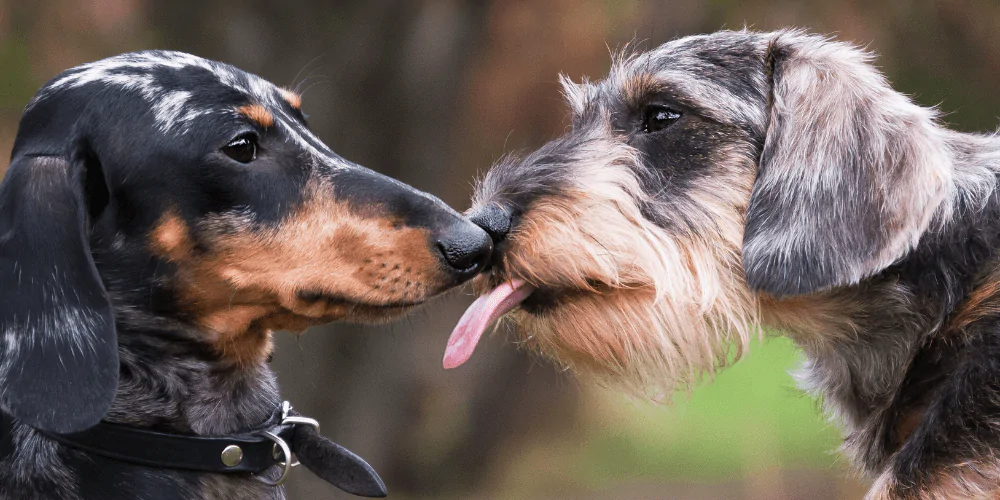
Why do dogs lick?
Dog licking is a whole language in itself! By licking, your pup can tell you a lot about how they’re feeling, both physically and emotionally.
Licking in general can be a soothing behaviour that creates calming hormones, whether that’s licking you, themselves, another animal, or surfaces. But there are also lots of other reasons for licking behaviour.
Courtship behaviour
A cheeky lick from an adolescent male dog or a female canine in heat can be a warning sign that they’re about to hump. So don’t be surprised if your arm or leg is suddenly occupied by a four-legged friend.
Supporting digestion
Licking for a minute or so after eating might help your dog get their digestive juices flowing. But lengthy licking after meals can be a sign of stomach pain. Your dog’s food may be unsuitable and is causing them digestive problems.
Tasting the air
There are plenty of yummy scents in the air that your pup may be trying to smell and taste. This could be some tempting food or even the pheromones of another dog.
Phantom pregnancy
Female dogs having a phantom pregnancy can have sore nipples and try to lick them to relieve any pressure from lactation.
She may also be excessively licking your hands, arms, or a toy as a displacement nursing behaviour.
Grooming
Petting your pooch can lead to mutual grooming. They will nibble up and down your skin and then lick you to ‘put your coat down’.
Puppy suckling behaviour
A young puppy taken away from their mum too soon may try to bond with you by suckling your hands and skin.
This echoes nipple suckling time with their mum but is harder to do with your skin. So you may notice your puppy suckling your fingers or licking you instead.
Puppies will also often lick around people’s mouths, similar to how they would lick mum’s muzzle to regurgitate food.
Signs of pain
If your pup is licking people and surfaces for no clear reason (or any reasons we’ve already mentioned), they could be in pain.
Dogs will lick parts of their body that are hurting them. But any hard-to-reach painful areas – like the stomach – will instead cause your dog to lick the air out of frustration.
This is quite common with Bulldogs and other brachycephalic dog breeds known for getting an itchy, infected tail pocket.
Sensing something’s wrong
Sometimes a dog can suddenly begin to obsessively lick one part of their human. This could suggest that they sense and smell something is wrong.
If this behaviour is brand new, relentless, and always hyper-fixated around the same area, think about getting yourself checked over by a doctor.
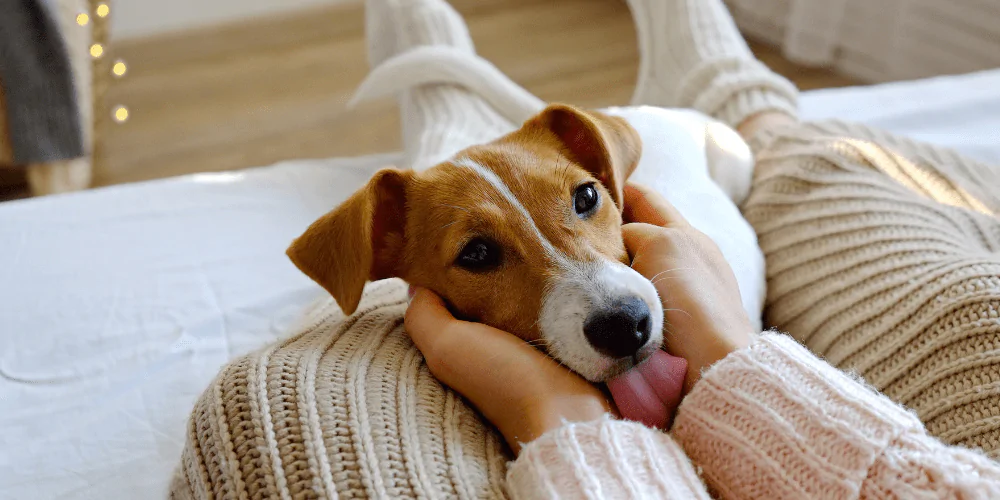
Why does my dog keep licking me?
Your dog keeps licking you because you’re so tasty! In all seriousness, your canine may be licking you because they like:
- The saltiness of your sweat
- Body creams/lotions you use
- To groom you if you’re wet after a bath or shower
- To try and get attention
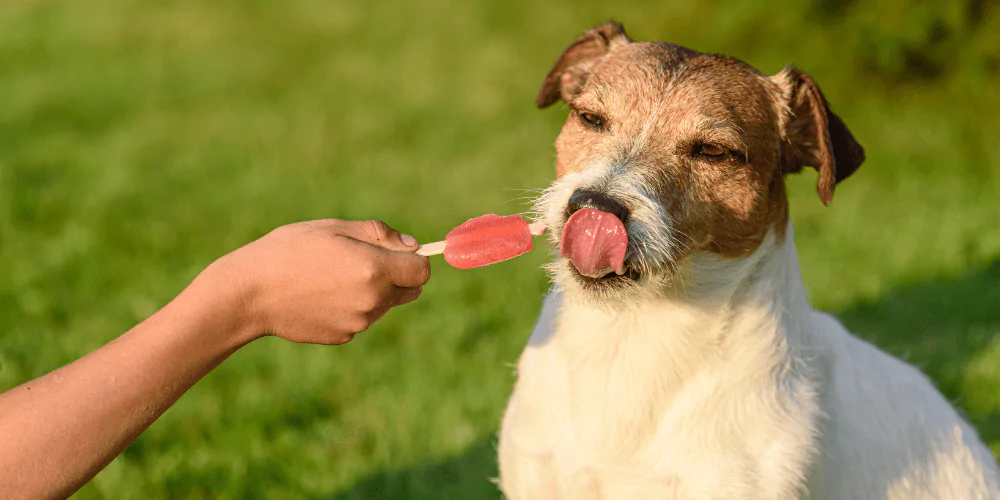
The benefits of licking for dogs
Licking can be a really positive behaviour for your dog. Proactively giving them an outlet for their licking each day can:
- Encourage calmness
- Reduce potential anxiety
- Give mental stimulation
- Offer sensory stimulation (as licking engages senses like touch and smell)
- Slow down feeding
Ways to bring in positive daily licking include:
- Licky mats
- Slow feeder bowls
- Stuffed food toys and food dispensers
Not to worry if you don’t want to buy any new feeders – try upcycling a takeaway container instead:
- Give the container a thorough wash
- Take some kibble and put it in warm water to swell
- Mix the kibble with a dog-safe food they like (such as mashed-up banana or natural peanut butter)
- Put the container in the freezer and then give it to your dog to lick once fully frozen
> When is dog licking a problem?
Licking is a problem when it’s taken to excess – and this level of ‘acceptability’ is something only you can decide.
So if you’re happy to let your dog lick you, it’s then unfair to get upset if your dog goes to lick friends or family members.
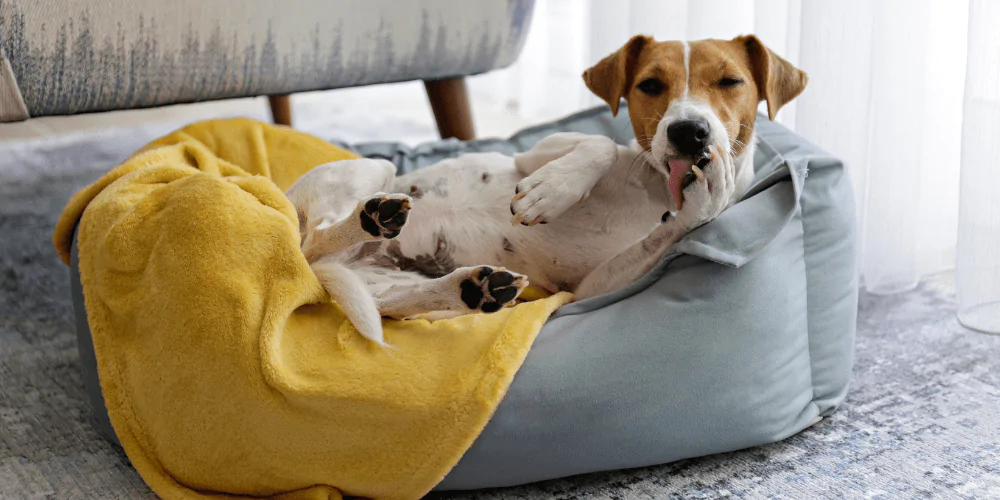
How to stop your dog from excessive licking
New, sudden, or obsessive licking is a sign that your dog needs to see a vet. They can do a full medical work-up and check for issues like gastrointestinal problems.
Displacement licking or extreme licking to bond with you means that a qualified behaviourist needs to be brought in to help.
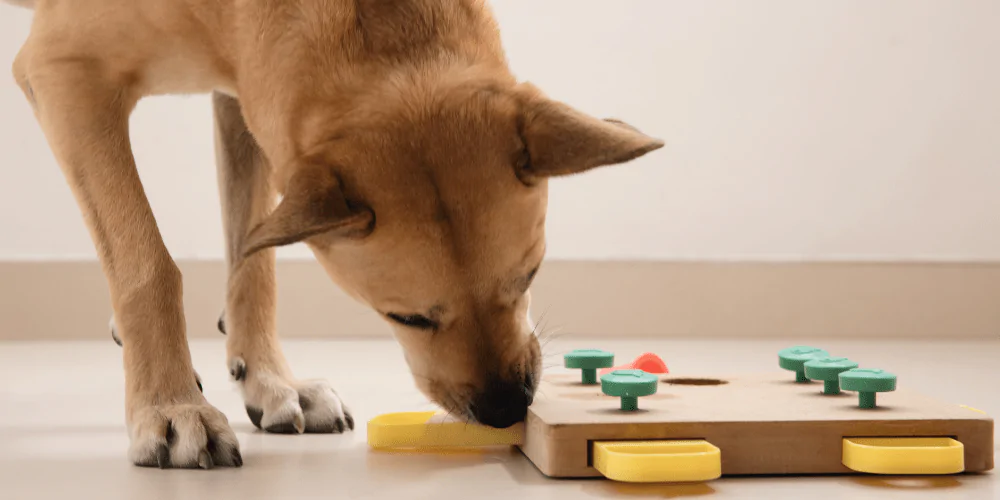
How to work through your dog’s licking
Managing courtship licking
When it comes to licking that leads to humping, you have two options:
- Understand and accept the natural behaviour – you can then put in training to tell your dog to go to their place or displace the behaviour onto a licky mat.
- Speak to your vet about neutering – but remember that a female dog is only likely to show this behaviour while in heat.
Managing digestion licking
Extreme licking after eating is a sign that your dog needs to either:
- Slow down their eating (Labradors and Spaniels are known for this) – use a slow feeder bowl to help your dog eat more calmly and take in less air.
- Eat smaller amounts throughout the day – younger dogs moving from four to three meals a day can struggle with having too much food in one meal. Try splitting their food down into smaller portions given little and often.
If neither of these apply, it could be your dog’s food – think about whether the food or protein type you’re feeding them is right. You might also want to think about seeing a qualified pet nutritionist.
Managing air licking
It’s normal for your male pup to check the mating status of females in the area and air scent for hormones. Once any females have come out of season, air licking should become less frequent.
Managing licking during phantom pregnancy
You don’t want your girl to lick her undercarriage during a phantom pregnancy as this could cause mastitis. Temporarily put her in a t-shirt and then take her to the vet for medication to end the symptoms.
Managing grooming licking
If your dog has got into a habit of grooming you, try to displace the nibbling and licking onto a toy or licky mat.
- If they’re occasionally licking you, grab the nearest toy and hold it for your pup to lick
- If they’re obsessively licking you, direct them to a licky mat
Management can also be introduced if general licking of your skin becomes inappropriate:
- Walk straight past your dog after a workout and shut the door while you shower
- Fully dry off after a shower before interacting with your dog
- Wait for any creams/lotions to dry and get dressed to keep a barrier between your dog and your moisturised skin
You can also put training in place to teach your dog a ‘sit stay’, ‘down stay’, or ‘in your place’.
Managing puppy suckling/licking
Dealing with suckling can be tricky, especially with a very young puppy desperate for suckling time:
- Get a small licky mat and put it on you so that your puppy has close contact with someone they love and trust
- Slowly start moving the mat away from your body as your pup gets older and grows in confidence
Managing licking out of pain or anxiety
Your dog should always see a vet if they are obsessively licking one place on their body.
Licking that’s anxiety-driven needs a professional behaviourist to deal with the root problem and not just the licking.
Managing attention licking
Changing the way you interact with your pup can help with attention-licking. Acknowledging the licking – whether positively or negatively – gets them the attention they want, so they keep doing it.
So you’ll need to either:
- Not acknowledge the licking behaviour when it starts. Instead, simply get up and walk away.
- Try and catch them before they go to lick and give them something proactive to do. This could be sitting quietly beside you while you stroke them
- Do a different activity if the licking happens at certain times of the day, such as playtime and mealtimes. Try giving them a Kong or toys instead.
Is your dog giving you all the kisses? Show them some love in return with flexible dog insurance from Petsure.


